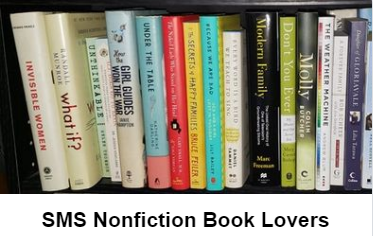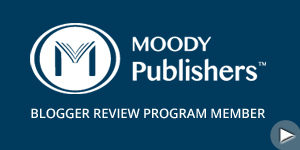This article is referring to students remembering what they read in school but is good advice for adults trying to retain information as well. I thought it was good advice and I wanted to share
.
© Ann K. Dolin, M.Ed. Used with Permission.
I recently read a fascinating article in the Wall Street Journal about how writing by hand engages the mind in learning. It said that in a study using advanced MRI technology, children who had practiced printing by hand had far more enhanced and “adult-like” neural activity than in those who had simply looked at letters.
I smiled when I read this because for years my tutors and I have urged our students to take notes as they read text. We have learned by experience that students who systematically take notes as they read retain more and, of course, do better on tests. Here are a few ways any student can improve retention and sharpen learning.
Take Notes While You Read
Learning is an active process, not a spectator sport. It requires energy and, most important of all, concentration. For many students, focus is not a problem when they are reading about subjects they enjoy. Unfortunately, this is not always the case. In the course of their studies, students have to plow through a good deal of material they find dense and boring. This is when taking the time to take good notes while reading becomes very useful for enhancing learning.
Note taking works on a number of levels. It heightens attention by forcing students to actively engage with the material they are reading. Just as importantly, it encourages students to put the material into their own words and into some meaningful order. This simple task improves comprehension because the student must summarize the information he’s just read. Reiterating and condensing text is one of the very best ways to understand and remember.
There are a number of methods for taking notes while reading. The most basic involves margin notes and “self-talk,” a technique in which the reader questions himself about what he’s reading. You can coach your child to use this strategy by saying, “After you read a page in your novel (or a section in your textbook), ask yourself, ‘What did I just read?’ or ‘What is the main idea here?'” His answers should be briefly recorded in the page margin. If writing in the textbook is not an option, your child can use Post-it notes.
Use Selective Highlighting
Another effective way to improve comprehension is selective highlighting. Highlighting is a great strategy, but it can often go wrong. Over the years, I’ve met many kids to whom I’ve given the official diagnosis of “highlighter happy.” These students take a great strategy and use it incorrectly by highlighting AS they read. By the end of the page, practically every sentence is marked.
Instead, teach your child to read first and then go back to selectively highlight only the essential terms, phrases, or dates AFTER he or she has read the section or passage. Interestingly, studies have shown that students are better able to retain information that is color coded. But the color of the highlighter is not important (although most favor yellow or pink); it comes down to personal preference.
Consider purchasing highlighting tape to use when marking in the school-issued text isn’t an option. Removable colored tape can be purchased at www.reallygoodstuff.com. Now, in order to prepare for an upcoming test, your child can review what’s been “highlighted” with tape and remove it as he masters the materials. Both highlighting and margin notes are effective as stand-alone strategies, but even more powerful when used together.
What Is The Best Way To Take Notes?
Taking good lecture notes is absolutely essential to academic success. Lately, I have started to believe the best use of these methods is not for taking lecture notes, but for taking notes while reading. My tutors and I are big fans of adapting the columned note-taking method originally developed for lectures (often called Cornell Notes) for this use.
Two-Column Notes
To set up columned notes the student divides or folds the paper into two sections, labeling the left one-third “key words” and the right two-thirds “notes.” On the left the student records the main idea, and on the right he jots down an explanation using short phrases.
This note taking method helps kids to be more independent learners. Your child can fold his paper vertically on the line between the key words and notes so that he can quiz himself and not rely on someone else to assist with studying. With only the left column visible, he asks himself, “Who was Paris?” and then says the answer. He checks his reply by flipping over the page. He continues to review in this manner, repeating and retesting himself on the terms he cannot automatically recall.
Older students can take this method one step further. Instead of simply recording a key word or concept, they write the chapter subheadings in their text books as a question. For example, if the heading is “Natural Selection and Adaptation Modify Species”, the student would jot down “How does natural selection and adaptation modify species?” They then add details in the right column that answer the question. Voila — the student now has a ready-made study guide!
To get an added bang, studies show that if students summarize their notes within 24 hours of initially recording them, they’re more likely to remember the information for a test.
Three-Column Notes
Three-column notes are highly effective for younger students and visual or tactile learners. In addition to the first two-columns, a third section for a drawing is added. By drawing a picture of the concept or term, children are hooking a concrete visual image to the information they need to remember. This is one powerful strategy!
Regardless of the note-taking method used, many students are under the impression that “less is more”. While being succinct is important, the fact is that the more notes students take, the more information they will be able to recall later. In this particular case, “more is more!”
Ann K. Dolin, M.Ed., is the founder and president of Educational Connections, Inc., a comprehensive provider of educational services in Fairfax, VA and Bethesda, MD. In her new book, Homework Made Simple: Tips, Tools and Solutions for Stress-Free Homework, Dolin offers proven solutions to help the six key types of students who struggle with homework. Numerous examples and easy-to-implement, fun tips will help make homework less of a chore for the whole family. Learn more at anndolin.com or ectutoring.com.








